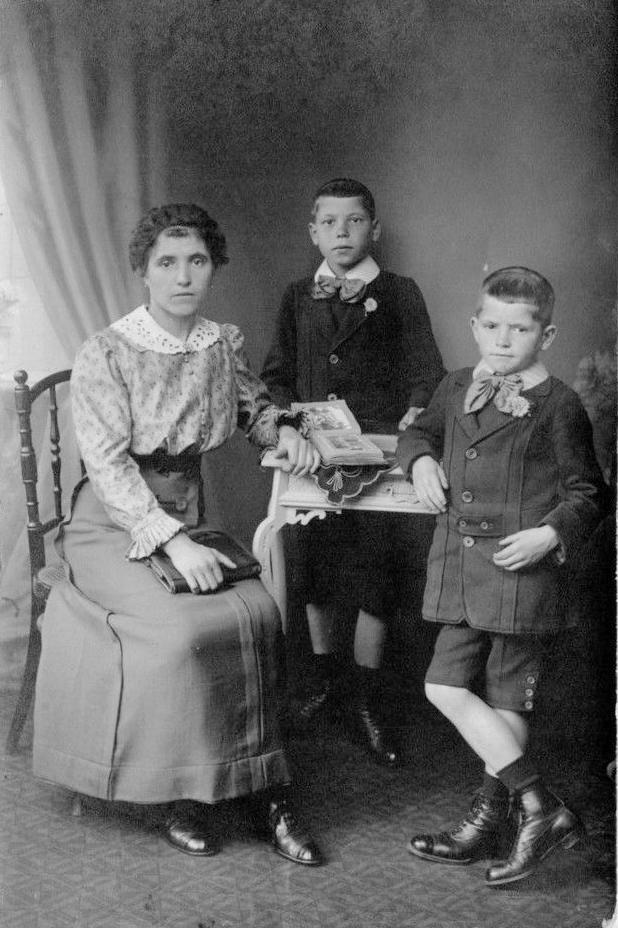
Boys' Knee Pants Suits: Accompanying Clothing

Figure 1.--This Europen post card back hs no information, but is of a type used on the continent. We are guessing that it id French or German taken in the early-1910s, but have no definite information. It is clearly not American because boys this age in america always wore long stockings with suits. Also by 1910, american boys were mostly wearing knickers. European boys also wore long stockings, but socks were common in the spring and summer.
|
|
The accompanying clothes worn with knee pants besides the actual suit items were mostly the hosiery and footwear. Here there were both important chronological and country differences. We see boys wearing long stockings with knee pants in the 19th century. Girls also wore long stockings although with skirted garments. There were some differences among countries. American children almost always wore long stockings, except when going barefoot. We see some younger European children wearing socks with knee pants and dresses, atlhough there were country differenes. The situation changed after the yurm of the century. Anerican children still wore knee pants suits, but shifted to knickers by the 1910s. They continued to war long stockings. Knee pants continued to be worn in Europe, although this varied from country to country. We see some European children wearing socks rather than long stokings even before the turn of the century. We note young children waring socks even in the mid-19th century, but as we near the turn-of-the 20th century we see older children wearing socks. We do not see this in merica where children cintinued to wear long stockings. We note knee pants worn with high-top shoes in the 19th and early-20th century. This was virtully univeral in America. We do not begin to see low-cut shoes until the 1920s by which time we no longer see knee pants. In Europe we also see high-top shoes with knee pants in the 19th century. They were not vrtually universal as was the case in Aamerica. We see for example both high-top and low-cut shoes in England. The prevalence of knee pants also varied by country. We no longer see knee pants suits in Britain to any extent, boys wore short pants suits. On the Continent it was a little different. We see short pants suits on the Continent, but we also see knee pants suits, which we believe were commonly worn for formal occassions. With these suits boys wore both socks and long stockings.knee socks, this varied both seasonally and for formality. We coninue to see this into the 1930s for formal occassion even as short pants were becoming standard.
HBC

Navigate the Historic Boys' Clothing Web Site:
[Return to the Main knee pants suits page]
[Return to the Main suit pants type page]
[Return to the Main suit page]
[Introduction]
[Activities]
[Biographies]
[Chronology]
[Clothing styles]
[Countries]
[Material]
[Bibliographies]
[Contributions]
[FAQs]
[Glossaries]
[Images]
[Links]
[Registration]
[Tools]
[Boys' Clothing Home]
Navigate the Historic Boys' Clothing Web chronological pages:
[Early 19th century]
[Mid-19th century]
[The 1860s]
[The 1870s]
[The 1880s]
[The 1890s]
[The 1900s]
[The 1910s]
[The 1920s]
[The 1930s]
[The 1940s]
[The 1950s]
[The 1960s]
[The 1970s]
[The 1980s]
Navigate the Historic Boys' Clothing Web style pages:
[Skeleton suits]
[Eton suits]
[Norfolk jackets]
[Kilts]
[Knicker suits]
[Blazers]
[Short pants suits]
[Long pants suits]
Created: 6:33 PM 2/1/2011
Last updated: 6:33 PM 2/1/2011


